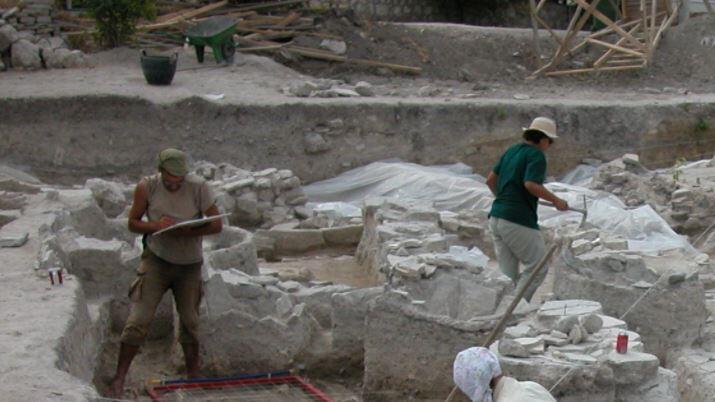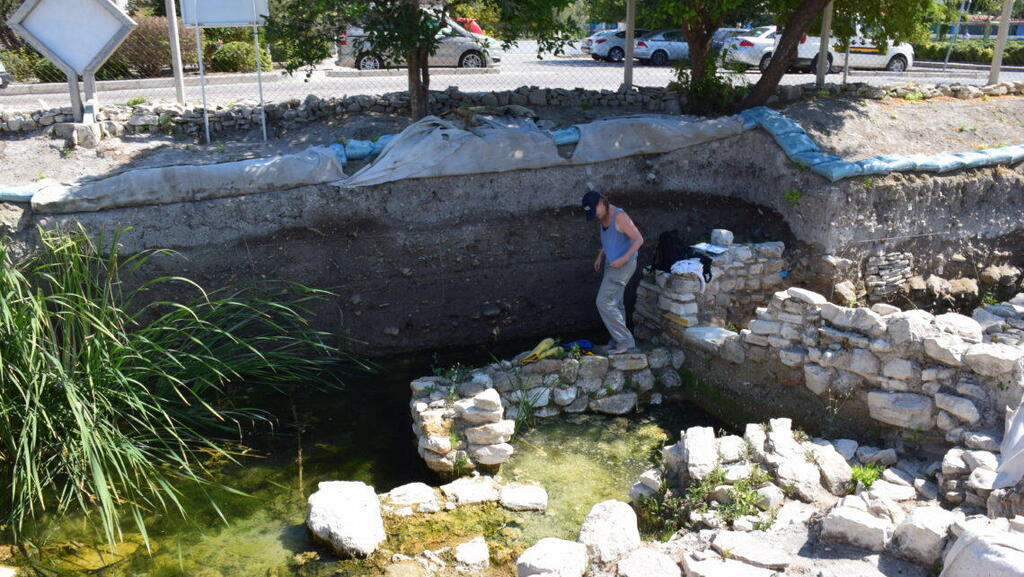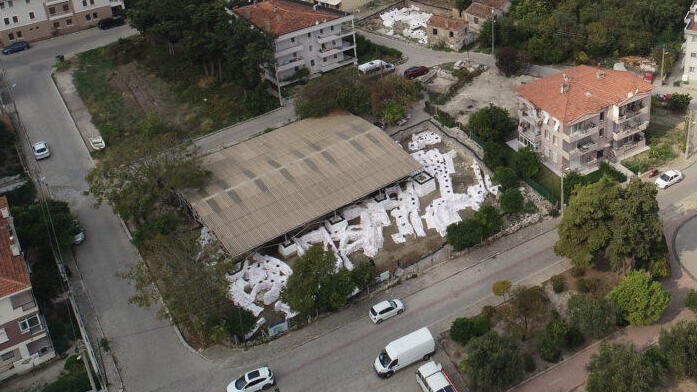In a world first, Turkish and Israeli scientists have unearthed the remains of victims of one of the greatest natural disasters to befall mankind more than 3,500 years ago.
An articulated human skeleton, as well as the skeleton of a dog, were found within tsunami debris dating back to the Late Bronze Age Thera eruption (modern-day Santorini), which devastated the volcanic Aegean island around the year 1600 BCE.
3 View gallery


Archaeologists working at the Cesme – Baglararasi Bronze Age settlement site
(Photo: The Media Line)
"It was one of the most significant volcanic eruptions in human history and likely caused the deaths of tens of thousands of people. Scientists say it also triggered massive tsunamis in the Mediterranean Sea.
The study was co-authored by Dr. Beverly Goodman-Tchernov, head of Haifa University’s Marine Geosciences Department, and Dr. Vasıf Sahoglu, a professor at Ankara University’s Department of Archaeology and head of the University’s Mustafa V. Koc Research Center for Maritime Archaeology (ANKÜSAM), alongside researchers in Turkey, Israel and Austria.
The excavations were headed by Sahoglu within the framework of the Izmir Region Excavations and Research Project (IRERP), and carried out under the purview of the Turkish Ministry of Culture and Tourism.
“This is the first victim of this event found [at] such a far distance in a stratified sealed tsunami context,” said Sahoglu.
“Most of the work on the Thera eruption until now focused on the dating of the event or its geological formation, eruption phases and volcanic ash distribution. With this discovery, we, for the first time, see this disaster’s effect directly on humans.”
According to Sahoglu the findings were “an eye-opener” for tsunami research and provide crucial information on the Thera eruption.
“From now on the theories concerning the end of the Minoan civilization and what happened to people will slowly start finding a solid ground and the impact of this natural disaster on human life will be the focus of future work on this subject,” he said.
3 View gallery


Research team member Dr. Beverly Goodman-Tchernov, head of Haifa University’s Marine Geosciences Department, explores a layer of ash at the Bronze Age site of Cesme
(Photo: The Media Line)
“No one before expected the impact of the eruption to be so strong in order to really destroy settlements so far north in the Aegean.”
Due to calibrated radiocarbon ages found within the tsunami deposit, researchers believe the skeletal remains date no earlier than 1612 BCE.
The remarkable discovery was unearthed on the Turkish coast at the site of the Bronze Age settlement of Cesme – Baglararasi, and the findings were recently published in the Proceedings of the National Academy of Sciences of the United States of America.
Goodman-Tchernov added that the discovery will enable scientists to recognize more ancient tsunami deposits and allow them to better assess coastlines today for tsunami risk.
Story written by Maya Margit and republished with permission from The Media Line


